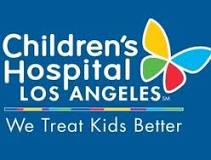Placebo Controlled Trial of Valproate and Risperidone in Young Children With Bipolar Disorders
| Status: | Archived |
|---|---|
| Conditions: | Psychiatric, Bipolar Disorder |
| Therapuetic Areas: | Psychiatry / Psychology |
| Healthy: | No |
| Age Range: | Any |
| Updated: | 7/1/2011 |
The primary aim of this proposal is to conduct a preliminary controlled trial of valproate
and risperidone in children ages 3-7 yr. with bipolar disorders. A secondary aim is to
carefully characterize these subjects using clinical rating scales and develop pilot data on
a very young cohort of children with bipolar disorders that can be used to support an
application to NIMH for a prospective, longitudinal study that will provide important
information about the course, medication response, neurobiology and outcome of these
patients.
It is now recognized that pediatric bipolar disorders are highly prevalent and that they
seriously disrupt the lives of children and adolescents, with studies showing poorer
academic performance, disturbed interpersonal relationships, increased rates of substance
abuse, legal difficulties, multiple hospitalizations, and increased rates of both suicide
attempts and completions (Akiskal, Downs et al. 1985; Lewinsohn, Klein et al. 1995; Strober,
Schmidt-Lackner et al. 1995). We are seeing an increasing number of very young children,
ages 3-7 years, with either frank symptoms of BP I disorder. Over 50% of these young
patients have a first-degree relative with a bipolar disorder and all of these patient's
families are significantly impacted by their BP symptoms. Many of these young BP patients
have been treated with stimulants or antidepressants and few have been treated with mood
stabilizing agents. Therefore, it is necessary to provide controlled studies of
psychotropics in this younger bipolar population to provide clinical practice with an
appropriate evidence-base.
Several major questions exist about these very young bipolar patients:
- What is the response of these very young bipolar patients to mood stabilizers and or
atypical antipsychotics?
- Will non-responders to mono-therapy with either valproate or risperidone respond to
treatment with both agents?
- How can we best characterize these patients clinically?
- What is the long-term outcome of these patients?
- Will earlier treatment lead to better outcomes?
The clinical use of mood stabilizers and atypical antipsychotic agents in children and
adolescents with bipolar disorders has increased significantly over the past few years,
despite the fact that only limited research has suggested that these agents are effective in
this population. Common clinical practice is to have patients continue on medications for
some time following remission, although the length of continuation treatment varies and
available guidelines are based on consensus, not controlled trials. The increased number of
medications prescribed has led to concern about over prescribing of psychotropics in
children and adolescents (Zito, Safer et al. 2000; Zito, Safer et al. 2003). Therefore, it
is necessary to provide additional controlled studies of mood stabilizing agents in this
younger bipolar population to guide clinical practice.
There is an overwhelming need for controlled trials of the various mood stabilizers and
atypical antipsychotics that are now available and being used in the community with these
young bipolar patients. Currently, we have the most experience with valproate and
risperidone in bipolar children, ages 8 - 17 yr. and based on clinical experience, believe
that these two agents are the safest and most likely to be efficacious in children ages 3-7
years. These agents are widely used in the community and controlled data are desperately
needed regarding the effectiveness of these agents in bipolar children, ages 3-7 years.
There are no specific behavioral treatments or psychotherapies that have been shown to be
efficacious for these patients.
Power Analysis (Provided by Dr. Judy Bean)
Since this is a preliminary study prior to a larger controlled trial, the percent of
responders receiving one of the drugs will be compared to the percent of responders in the
placebo arm. The children will be randomized to achieve 24 total children in each drug arm
and 12 in the placebo arm. This 2:2:1 randomization scheme was selected because the
expectation is that the percent of responders, in each of the drug arms, will be greater
than the percent in the placebo arm. The expectation is that 60% of the children receiving
risperidone will respond (Frazier, Meyer et al. 1999), as compared to only 8% in the placebo
group (Geller, Cooper et al. 1998). Power was calculated for a one-sided test since if
placebo does better no application will be made to NIH. Using nQuery®, version 5.0, a
chi-square test, with a 0.05 significance level, will have 96% power to detect the
difference. For valproate, the percent of responders is expected to be 55%(Kowatch, Suppes
et al. 2000), as compared to the 8% in the placebo arm. Again, using a chi-square test with
a .05 significance level, the power will be 86 with 24 in the valproate arm and 12 in the
placebo arm. This pilot study does not power to determine if the two drug arms are
equivalent.
We found this trial at
2
sites
Childrens Hospital Los Angeles Children's Hospital Los Angeles is a 501(c)(3) nonprofit hospital for pediatric...
Click here to add this to my saved trials
3333 Burnet Avenue # Mlc3008
Cincinnati, Ohio 45229
Cincinnati, Ohio 45229
1-513-636-4200

Cincinnati Children's Hospital Medical Center Patients and families from across the region and around the...
Click here to add this to my saved trials
